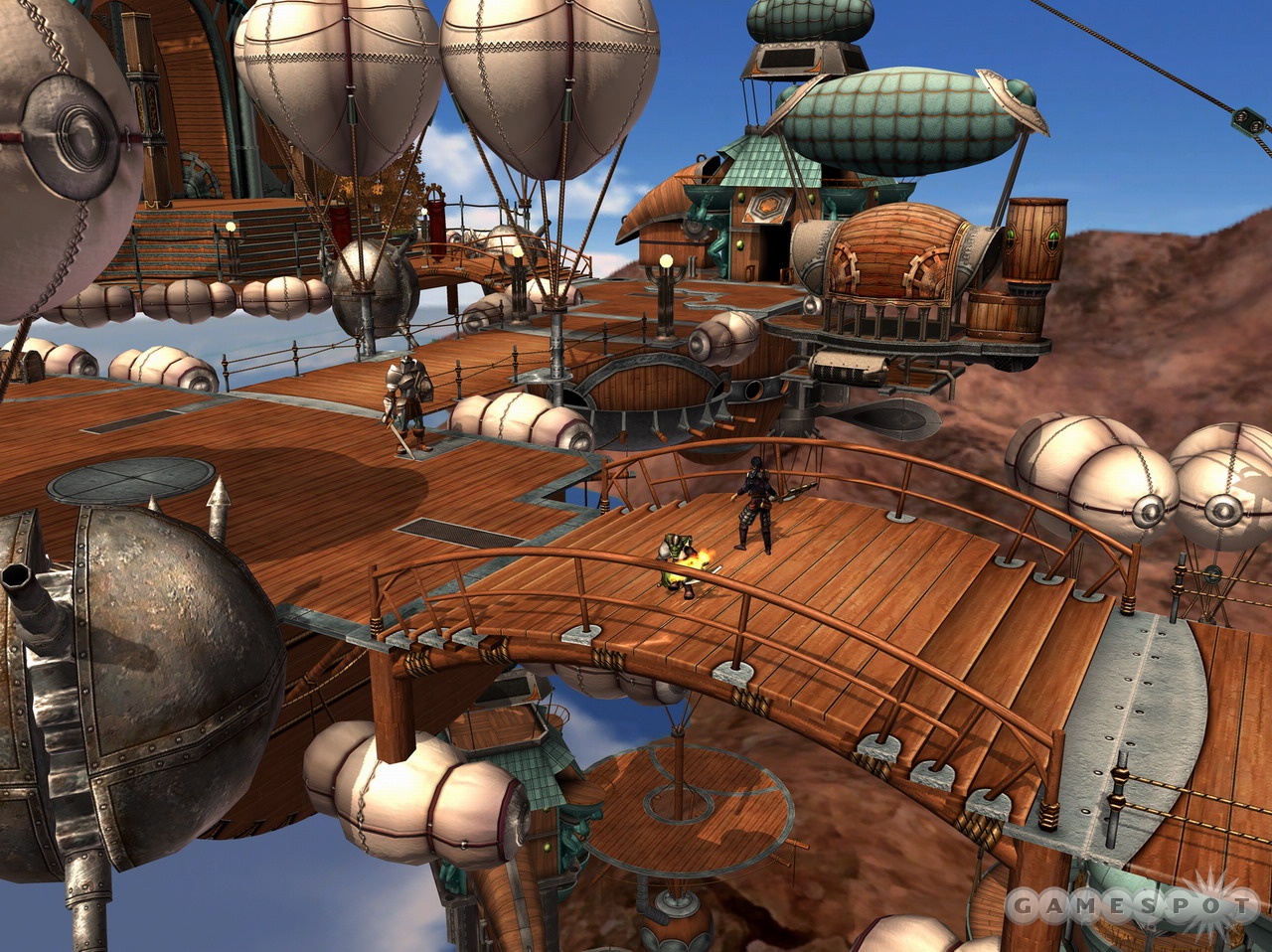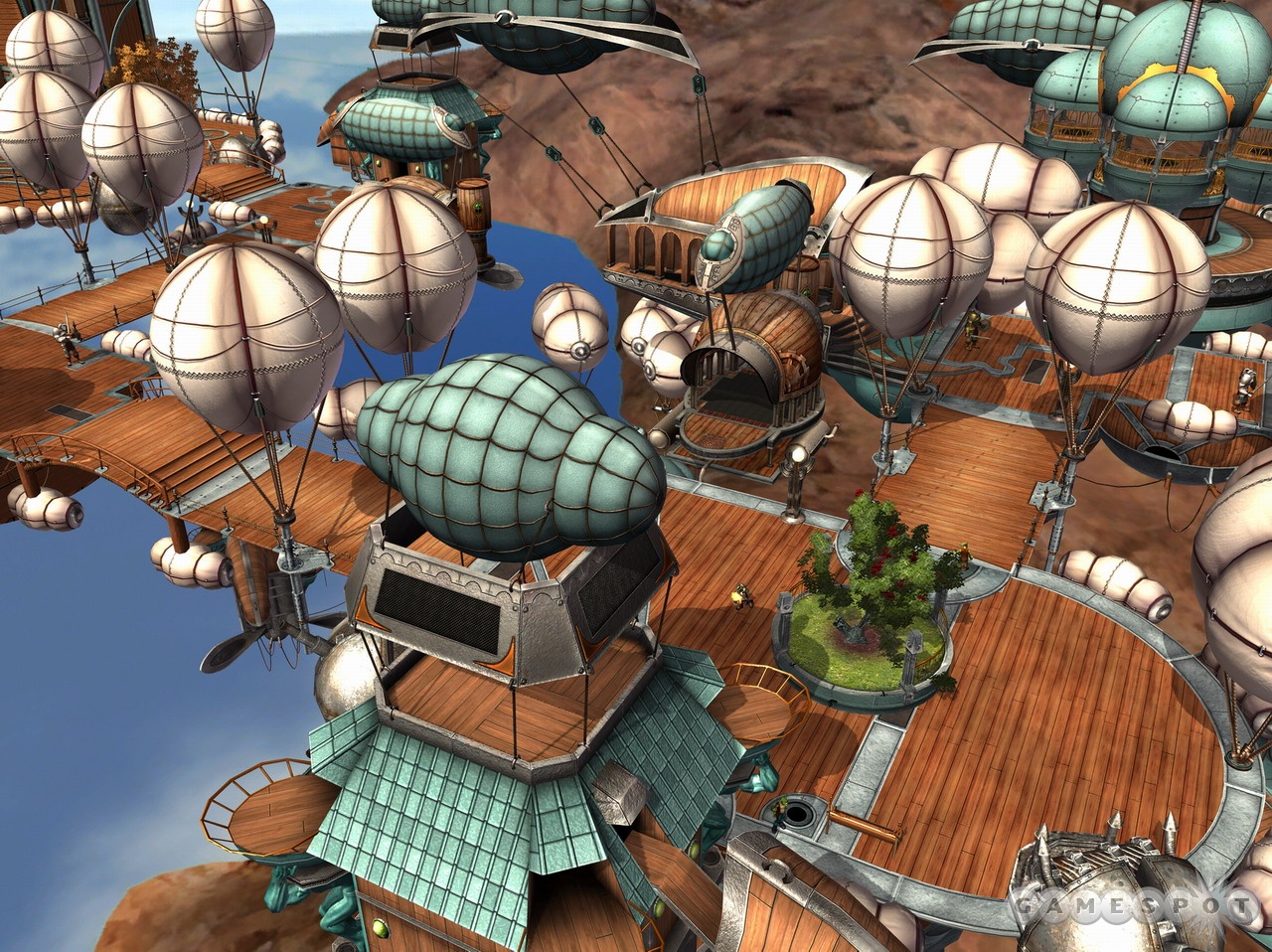Silverfall Designer Diary #2 - Creating a Distinctive Art Style
How do you create a game that looks like a comic book come to life? That was the challenge that Monte Cristo faced with Silverfall.
While Silverfall is an action role-playing game inspired by the classic Diablo, it's also a game with a distinct art style of its own. Designed by France's Monte Cristo, Silverfall is set in a fantasy realm full of humans, elves, trolls, and goblins. The twist is that instead of fighting one another, all of these races are united to battle an army of undead, a task that will take you through a huge virtual world. Silverfall's distinctive art style is eye-catching because the game blends 3D graphics with cel-shaded animation, giving it the look of a comic book come to life. Project manager Jehanne Rousseau tells us more. Silverfall ships next month.
A New Design for a New Universe
By Jehanne RousseauProject Manager, Monte Cristo
When it came to creating the graphical universe of Silverfall, our goal was to make something visually different and easily identifiable. We worked very closely with our art director, Julien Briatte, who really brought his own views and ideas to the table, such as the thin black outline around character models, which is quite unique and has been the topic of much discussion across the Internet.

We worked in several steps: Define the graphical style with a technical prototype; work with illustrators; then work with 3D artists to create the moving game objects and characters.
In fact, the in-game graphical style was decided on long before the first illustrator worked on any particular beast or setting. The goal was to create something that would be new and appealing enough to ensure Silverfall would set itself apart from other games visually. The idea came about to create a black outline on the characters and monsters to better separate them from the background and setting. It gives the game a kind of comic book style, which is generally appreciated. We then made the first prototype with a small outdoor level and a dungeon to see how it would look.
When Arnaud Simon-Laforest, our lead 2D character designer, joined us and discovered the graphical style of the game, he was quite happy to see it and liked it a lot. This made the work very easy then; Arnaud was inspired by the style and confident in the 3D team to make good use of his work. So he and Julien created many different creatures, monsters, playable races, and non-player characters, incorporating--when required--the nature or science aspect of the game into the character design. The 3D artists took those drawings and got to work on creating the meshes and later turning that concept into a moving creature.

For the settings, another artist, called Geyser, whose prior experience was in the comic book industry, joined the team to draw environments, such as towns, villages, swamps, and dungeons. The settings were drawn from a distant perspective and then modeled in 3D. A lot of time was spent ensuring that the environments were easily recognizable in terms of their affiliation to science or nature. Nature used inspiration from, well, nature. For instance, bird nests were used as the base of the underground nature-oriented goblin village of Dripp. For science, the idea was to go on more of a steam-punk universe, mixing "high tech" devices with organic materials like wood. For Silverfall, as it is the ultimate town in the world, the lines for the buildings were very delicate and elaborate, with a kind of elvish feeling.
Silverfall reflects the graphical work that has been progressing throughout the game's development. The 2D artists were happy to provide concepts for the 3D game they saw, while the 3D artists were happy to have good material to work from. And both were happy to see the result in the end, which is almost like a 3D illustration you can move around in freely.
Got a news tip or want to contact us directly? Email news@gamespot.com
Join the conversation